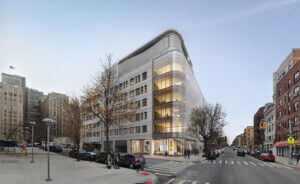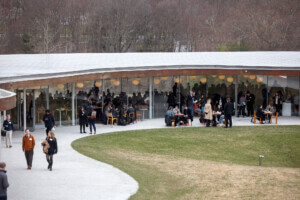Jeffrey Sachs, the charismatic director of the Columbia University Earth Institute, gave a moving speech last night at the Graduate School of Architecture, Planning, and Preservation on the environmental problems that are unique to our time. Sachs, free-market economist turned green evangelist and a special adviser to United Nations Secretary General Ban Ki-Moon, spoke on the objectives of the Institute: ending extreme poverty, maintaining the health of the ecosystem, promoting peace and shared prosperity, and advancing humanist aesthetics.
Personally, it made me feel like we are at a point where each of our actions counts, especially in our role as architects, designers, and planners. Technology has allowed us to sew great damage, but it may also enable us to heal the planet. Much of Sachs’s talk dealt with what he calls “eco-tectonics,” that is the changing economic plates. The rise of Asia, or the “rise of the rest” as Fareed Zakaria calls it in The Post-American World, enabled by the new technological capacity of developing countries, is not only accelerating the human impact on the environment, but filling in power gaps. Using the current financial crisis as an example, Sachs explained how everything can go wrong in a world in which we don’t fully comprehend the interactions of the different mechanisms at play, were interconnectedness is playing a stronger role than ever, and chain reactions make local problems global.
When he pointed out that the presidential campaign was focused on Middle Class voters, who were decisive to win the election, and poverty issues were hardly tackled, I couldn’t help but translate it to our profession: Architecture, like politics, is focused on those able to make the commissions, and not on those who really need of clever and groundbreaking ideas delivered on a low budget. In a profession that is crowded by battles of egos, and where formally adventurous buildings compete to stand out, there is a need for deeper thought and less aimless aesthetics.
We are living in a time in which technology and communications make it possible for a designer in New York to extrude a nearly ready made skyscraper in the middle of Beijing, disregarding any possible impact that it may have not only to the immediate surroundings, but also on the environment. It is a time in which the architectural profession needs to re-examine how it applies global solutions to regional contexts, and in the same way be mindful about the local affecting the big picture. What does building green truly mean? Sustainability is not just about adding solar panels to old designs and using solvent-free paints. Truly green design requires understanding the intricate social, economical and political interactions as well as the physical conditions of our cities to prepare them for the overpopulation of the future. Even though we have learned from the disasters of tabula rasa projects of the 60s and 70s, it is not a matter of romanticizing existing conditions, which is often are unacceptable, but a question of sensitive political, cultural, and aesthetic action and interaction as an essential part of responsible practice.










